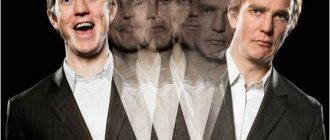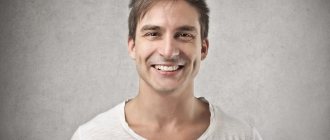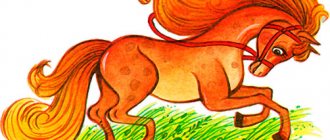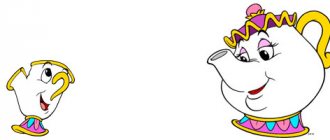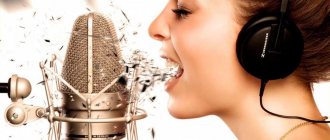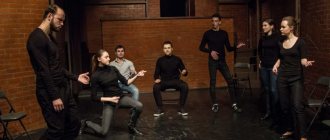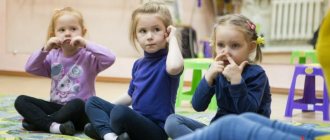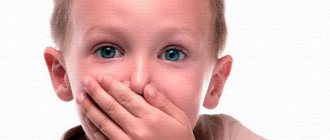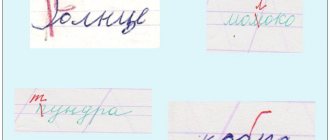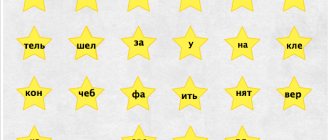Every aspiring actor dreams of immediately going on stage in a serious role and performing to the sound of applause. But dreaming, unfortunately, is not enough; stage triumph begins long before receiving a role and not with a reading of the play, but with painstaking and hard work. After all, talent is 99% hard work and only 1% divine spark.
Of course, no matter how much you work, you still won’t get one hundred percent without one percent, but you won’t get far with just one percent. To shine on stage and in films, you need to clearly understand from the very beginning what acting is.
Where it all begins
So as not to hear the famous “I don’t believe it!” at the first performance. Stanislavsky, a young man or girl who sets out on the thorny path of life in creativity will have to work a lot on himself. In acting, not only true experiences are important, but also how the actor expresses them. After all, you can feel everything at least ten times, be at the breaking point, but the viewer will see nothing but sluggish movements and incomprehensible, weak facial expressions. To convey a thought or emotion to the viewer, you need to have an expressive acting apparatus, that is, a body and face.
The first exercise for a beginning actor, chess player or musician will naturally be the easiest. But only after achieving perfect execution can you proceed to the next task.
In many educational institutions that train young talents according to the Stanislavsky system, acting classes begin with taking a chair to the stage. This assignment often causes confusion among students, because they want to become actors, not stagehands! But only after achieving ease and accuracy in such a simple (at first glance) exercise can you move on. You always have to start somewhere, and bringing out a chair is the first step onto the stage.
When muscle activity is more reflected on the face
When muscle activity is more strongly reflected on the face (photo: @roseinc) The lower the level of hydration, as well as the firmness and elasticity of the skin, the more visible the results of active facial expressions are on the face. By the way, she can be like this from birth. For example, on thin and dry skin, expression wrinkles become obvious already at 25–30 years of age, and sometimes earlier.
Expert opinion
Ksenia Kuznetsova, dermatologist, cosmetologist, first category doctor at the SM-Cosmetology clinic “The condition of the skin is actively influenced by external factors: water quality, air pollution, climate with sharp fluctuations in humidity and temperature.
These include the causes of photoaging - frequent and prolonged exposure to the sun without sunscreen. Let’s not forget about internal factors: for example, due to hormonal changes, expression lines may become more noticeable.” Factors that increase the likelihood of early appearance of fine lines and wrinkles include unbalanced diets and nutritional deficiencies, all of which have a negative impact on the skin.
Botox, laser resurfacing and contouring: why do some procedures fail? Read
Articulation
Exercises in acting and stage speech begin with the articulatory apparatus. These are our lips, jaw, tongue and everything that is involved in the process of forming the words that we speak out loud. If an actor has a sluggish articulatory apparatus, his words from the stage will not be understood by the audience, they will sound unclear. Therefore, the speech apparatus not only warms up before the performance, but also constantly develops and improves.
The warm-up always begins with the jaw, because how well the actor’s mouth opens determines what the message of what is being said will be.
Exercises for the muscles of the lower jaw
- Exercise 1. Move the lower jaw forward and return to its original position.
- Exercise 2. Perform lateral movements with the lower jaw, then return to the starting position.
- Exercise 3. Bite your upper lip with your lower teeth, hold for a count of 5, then relax. And vice versa.
- Exercise 4. Squeeze your jaw with force, tense the muscles of your neck and jaw (remember this feeling), relax the muscles and open your mouth.
- Exercise 5. Imitation of chewing with a closed and open mouth alternately.
- Exercise 6. Touch your chin to your chest.
Relax.
Facial expressions
Exercises for facial expressions in acting training are not included in a separate category. But mobile facial expressions are no less important than a mobile articulatory apparatus. After all, in order for the viewer to empathize with the hero, he must understand what feelings and passions are possessing him at a given moment, and eyes alone are not enough to express the inner state. This involves facial expressions, posture, and movements. Of course, showing feelings with the help of facial expressions will not cause empathy - it must be supported by real feelings that the actor in the image of the hero is currently experiencing.
To develop facial expressions and give mobility to facial features, it is enough to simply make faces in front of the mirror, depicting joy, sadness, fear, anger. A novice actor can see what muscles work in this process in life - for this he makes observations, and everything he sees is carefully recorded in his personal diary.
MASKS
Vladimir Vysotsky
Laughing out loud among the distorting mirrors, I must have been cleverly played: Hooked noses and grins from ear to ear - Like at the Venetian carnival
What should I do? Run, but quickly?
Or maybe have fun with them? I hope I am under the mask of animals. Many have human faces.
Everyone is wearing masks, wigs - all as one. Who is fabulous, and who is literary. My neighbor on the right is a sad harlequin, Another is an executioner, and every third one is a fool.
I join the round dance laughing, But still I feel uneasy with them, - What if someone likes the executioner’s mask and doesn’t take it off?
What if the harlequin becomes sad forever, Admiring his own sad face? What if a fool forgets his stupid appearance on his normal face?
A ring closes around me, They grab me and drag me into a dance. Well, well, my usual face. Everyone else took it for a mask.
Firecrackers, confetti! But everything is not like that... And the masks look at me reproachfully. They shout that I’m out of step again, that I’m stepping on my partners’ feet.
Evil masks laugh at me, Cheerful ones begin to get angry, Hiding behind a mask, as if behind a wall, Their true human faces.
I'm chasing the muses, But I won't ask any of them to open up: What if the masks are thrown off, and there are still the same half-mask, half-face?
I finally got into the secret of the masks. I am sure that my analysis is accurate: And others have a mask of indifference - Protection from spitting and slaps.
But if you were a scoundrel without a mask, wear it. And you? Everything is clear to you. Why hide under someone else's face, When your own is truly beautiful?
How can I not miss a kind face? How can I guess the honest ones for sure? They decided to wear masks so as not to break their faces on the stones.
Breath
Half the success depends on proper breathing on stage, as in sports. First of all, with the help of breathing, a message is created that carries sounds to the very last rows. Also, exercises for acting training include tasks to increase lung capacity. An actor who begins to choke during a long monologue does not look very beautiful and organic on stage - this immediately “knocks out” the viewer, and it is very difficult to return him to the performance. The actor also needs to be able to pronounce words clearly and with a message at the moment when he performs various acrobatic stunts or physical exercises. It is quite difficult to keep your breathing at the same level, and this also needs to be learned by doing certain exercises.
- “Balloon” - using breathing, we support an imaginary (or real) balloon in the air.
- “Lumberjack” - we exhale sharply while moving our hands, as if we were chopping wood.
- “Ski race” - with each exhalation we make movements with our arms and legs, as if we were skiing, with a long exhalation we slide down the mountain.
- “Candle” - we imagine that a light is burning at the tip of the index finger, we extinguish it with our breath, moving the finger further and further.
- “Squat” - we sit down slowly (in 10 counts) with an exhalation, inhale at the bottom, and stand up just as slowly with an exhalation.
Lip exercises
- Exercise 1. Stretch the corners of the mouth to the sides, then lower it down, then move the lips forward with the proboscis.
- Exercise 2. Lightly bite the lower lip with the upper teeth, then bite the upper lip with the lower teeth. Return to starting position.
- Exercise 3. Turn your lips into a proboscis. We make circular movements with our lips, first in one direction for 10-12 turns, then in the opposite direction.
- Exercise 4. Turn your lips into a proboscis. We move our lips from right to left.
- Exercise 5. Puff out your cheeks, suck in your cheeks.
- Exercise 6. Puff up your cheeks. Alternately “pump” air from one cheek to the other.
We recommend that you read: What is conflict escalation
Relax.
Movements
A good actor is now unthinkable without complete control of his body. Both in cinema and in the theater, he may have a role with difficult stunts and considerable physical activity. In addition to acting classes, body capabilities are also developed in stage movement classes. They include general warm-up and stretching of muscles, removal of tension and stiffness, acrobatics, balancing act, practicing stage combat, slapping, hitting, kissing and so on, part of the circus art. All these exercises begin with simple warm-ups and end with complex plastic performances, when actors express their thoughts without words, only with the help of plastic movements.
An exercise for a novice actor related to movement will in the future help him evoke the empathy of the audience, express thoughts and emotions in all available ways: not only with facial expressions and voice, but also with plasticity.
Imagination
It is difficult to imagine an actor who does not have developed imagination and fantasy. After all, he constantly needs to believe in something that actually does not exist. Only the true faith of the actor himself, his complete immersion in the role and in the situation will make the viewer believe that this is Hamlet, and not a strange boy in funny pants; King Lear, not a grandfather who looks like Santa Claus, and so on.
There are no people who have no imagination at all. But there are people in whom it is poorly developed. To imagine the truth of a situation and yourself as the main character in it, imagination needs to be developed. First of all, this is done through observations, writing fairy tales, poems, stories, and reading good authors. Then work begins with acting sketches. A sketch is a small sketch in which the actor must act organically, which means he must believe.
We can say that the main exercise for a beginning actor is a sketch. It can be different: for an objectless action, in conditions of justified silence, with words and with objects, single and paired. The main thing is that the sketch has a plot and an event. At the same time, the actor must come up with a situation himself (or work in a given one) and behave in it naturally and organically, and for this he must believe that he, in the image of the hero, really found himself in such a situation.
Why do wrinkles appear on the forehead even if we are not surprised?
Wrinkles on the forehead in most people, as a rule, appear due to the facial habit of “wrinkling the forehead.” Being under constant strain, the muscle shortens over time, leaving deep creases in the skin.
But sometimes it happens that some people develop wrinkles on their forehead even without the habit of “wrinkling their forehead.” In this case, wrinkles are localized closer to the hairline.
This is due to the structural features of the frontal muscle. In fact, it is correctly called the occipitofrontal muscle. It consists of two parts: one part is located on the frontal bone and is called the frontal belly, the other is on the occipital bone and is called the occipital belly.
Parts of one muscle are connected to each other by an aponeurosis, the so-called. tendon helmet (this is the scalp). It is precisely because the occipital abdomen is often spasmed that wrinkles on the forehead and a feeling of constant tension in the forehead begin to appear.
Therefore, it is important to be able to relax the occipital belly of the occipitofrontal muscle.
Massage helps you relax very well. Watch several facial relaxation techniques from Inna Nefedovskaya!
You can order a full course of facial massage, as well as facial gymnastics and techniques for managing facial muscles and controlling emotions using the link below.
"Kremlin plastic surgery: Golden threads - Lifting without surgery"
Smooth your skin like you did when you were young! MAKE AN ORDER RIGHT NOW!
Did you like the article?
Share, click on the button of your favorite social network!
